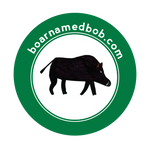How To Use Bob in the Classroom
Stay up to date with Bob and where we will be going with our upcoming events!
Boar Named Bob Fundraiser!
Thursday, September 25th, 4-9 pm
Rancho Seco Steakhouse
416 E 16th Street
Mt. Pleasant, Texas
Ginger Bob Recipe
Just in time for the holidays, here's our favorite Ginger Bob Recipe!
1 cup Shortening
1 cup Brown Sugar
1 egg
1 cup Molasses
2-3 teaspoons Ginger
1 teaspoon Cloves
1 teaspoon Cinnamon
1 slightly rounded Tablespoon Black Pepper
5 cups flour
1 & ½ teaspoons Baking Soda
2 Tablespoons Vinegar
½ teaspoon salt
Cream first 4 ingredients as listed above. Then, add remaining ingredients as listed. Chill dough.
Preheat oven to 375 degrees. Roll out on floured fabric, cut with cookie cutter. Bake on ungreased cookie sheets 7-10 minutes. 7 will be softer, 10 will be crisp.
These keep well and can be mailed as gifts. Store in sealed container.
